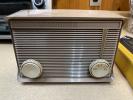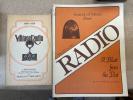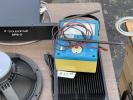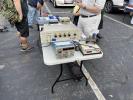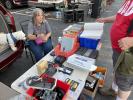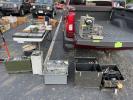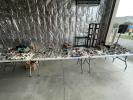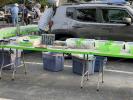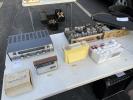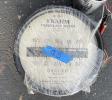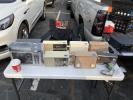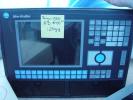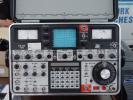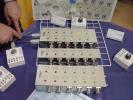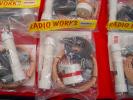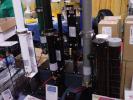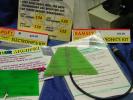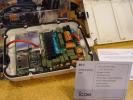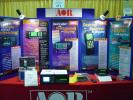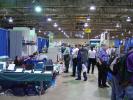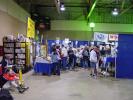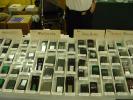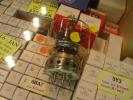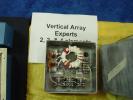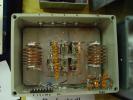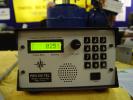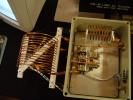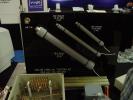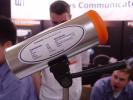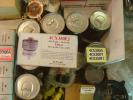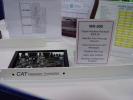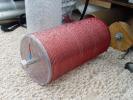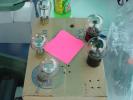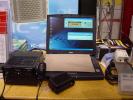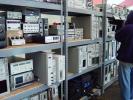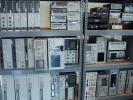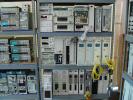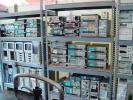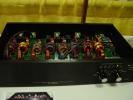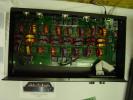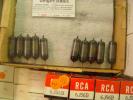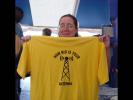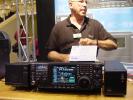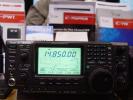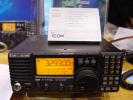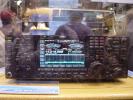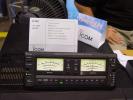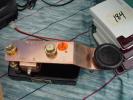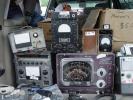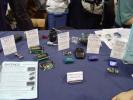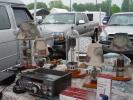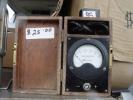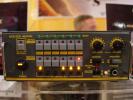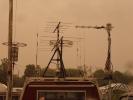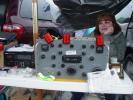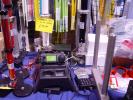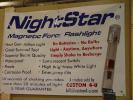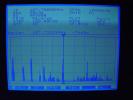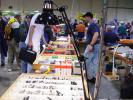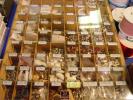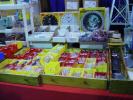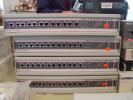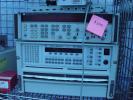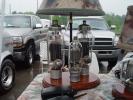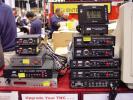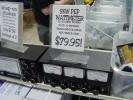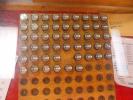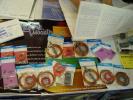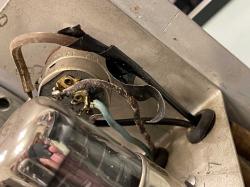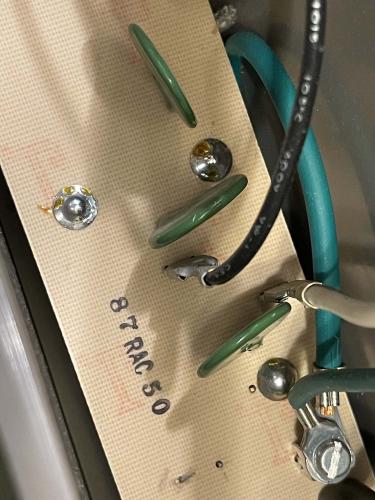- 2023
- Aug
- 14
Pictures from the 2015 Findlay Radio Club Hamfest
More digging around in archives revealed a bunch of pictures from the 2015 show in Findlay. I can’t remember if this was the first or second year I went to this show, but it was quite large, and had a lot of things to see and buy, if you were so inclined. The weather was superb, a bright, sunny day.
While I didn’t have the best of cameras at the time, I still took a few good (and some blurry) shots of equipment and items at the show. This one was definitely worth the trip, and we stuck around until the show ended and vendors were packing up.
Next up is some photos from Dayton of the same year.
- 2023
- Aug
- 13
The only two pictures I took at the 2016 Hamvention
2016 was the last year for the Hamvention at Hara Arena, which was falling into serious disrepair. (It closed later that year.) To be fair, I don’t know how you could tell - the first time I went in the mid 90s it looked like it should have been condemned. Fortunately, I wasn’t there when the sewer lines burst…
I’m not sure why I took these two images, save one was a machine you don’t see in the wild very often. The other was probably because I knew someone that wanted said item, and it was a “Hey, you want this?” message. Regardless, here they are - my last little bit of the Hamvention at Hara.
Actual silicon solar panels. That was a pretty reasonable price for the time.

An IMSAI 8080 in all it’s glory. You just don’t see many of these in the wild.
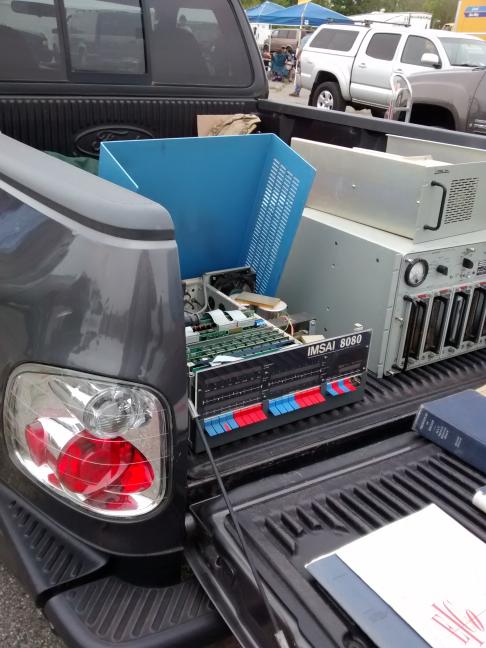
Other than the rather generic telephone relay rack I brought home and took a picture of (complete with nutty friend comparing heights,) that’s it. I thought I took more than this, but I guess not!
- 2023
- Aug
- 11
My haul from the Columbus 2023 Hamfest
I really tried to be good this year and not drag home much. Some parts and things still made it into my car, however - I guess I just didn’t lock the doors or something.
But, I did limit myself to something I’ve been looking for (An AA5 radio and a tube tester,) some books, and a handful of parts. The only real impulse buy was the Simpson Meter - how can you pass up that awesome Bell System aqua and yellow? While it’s not of much use these days, requiring oddball 15V batteries, it’s still an interesting piece and will go on display with my other Bell System artifacts.
I wanted to bring home the big coffin radio that was at the show, but there’s simply no room for that. Some other test equipment caught my eye as well, but again - no room or need. I don’t need a 200W meter sitting in the rack drawing more current than the rest of the equipment!
Everything that I could test works well, and I kept spending to a minimum. I guess that leaves more money for later shows(?) We’ll see what Findlay brings…
- 2023
- Aug
- 11
The Columbus 2023 Hamfest
No rain threatened this year’s show, and there were a lot of vendors out - including some with a good deal of test equipment and other items. Lots of goodies, and everyone seemed willing to be negotiable on prices. My fellow show-goer and I spend the morning wandering around before heading over to the greasy spoon next door for some late breakfast grub and coffee.
I tried not to bring home much, but some stuff still wandered into my car. There are a few pieces I would have like to brought home, but space didn’t allow me to do so and they sadly had to remain where they were.
Here are my pictures of the event, and I’ll be posting my haul shortly.
Next show is the Findlay show, which always has some good stuff (assuming no rain!)
See you there!
- 2023
- Aug
- 8
Checking out a Heathkit AG-7 Signal Generator
This is a Heathkit AG-7 audio signal generator. One of Heathkit’s many pieces of test equipment, this one dates to the 1950s. It has a mix of tube names (most with RCA type labels) indicating it was probably in use for quite some time.
This was purchased at the Breezeshooter’s Hamfest in Butler, PA during their spring 2023 show. It was kind of a spur of the moment purchase. I initially passed it by, but picked it up on the way out.

I really don’t have a use for this item, but what caught my attention was the label on the side. This appears to have been in the rack at a central (phone) office in Erie PA. Was this device generating the craft access test tones? How many technicians listened to this device’s output over the years? It’s kind of cool to think about that.
The telcos were big fans of stamping stuff with ink instead of putting tags on thigs. That it has an actual General Telephone sticker is neat in itself.

Top of the device is a little dusty, so it appears that it was well cared for in it’s life and not just shoved in a barn somewhere.

Similarly, the bottom seems to be in good shape.

It almost looks like it was factory built,

But there are tell-tale signs it was probably put together by someone at the phone company. There is pencil labelling all over the chassis where someone was building it and making notes while they did. That’s always neat to find and gives you a connection to the person that built the device.
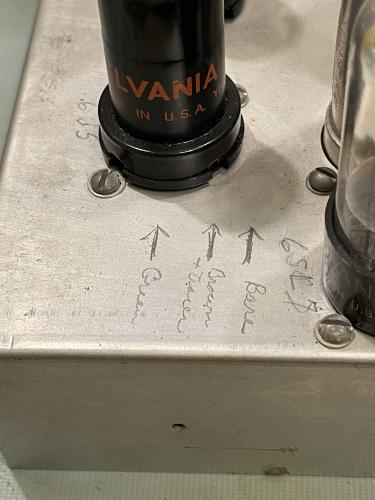
The case itself is in pretty good shape, just some surface rust where the paint was thin or damaged from use over time.

Small banana slicers are used to trim the output.
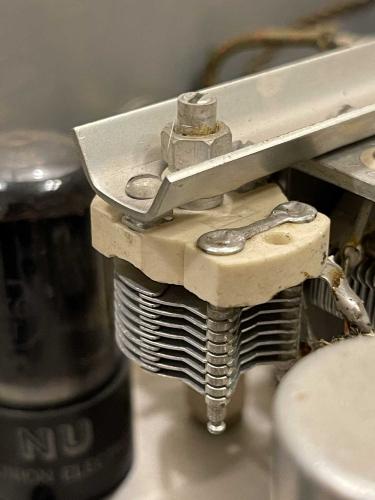
One of the terminals on the front was gone, but since those come apart easily, that’s to be expected. If I wanted to put this back into service, that would be easily fixed.
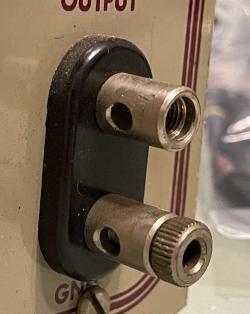
Here’s something that leads me to believe this was probably being used for test tone generation. Here’s the amplitude control. Note the two holes on either side of the pointer - this looks like it was strapped down at some point to give a known output level. The amplitude couldn’t be changed if the control couldn’t be adjusted.
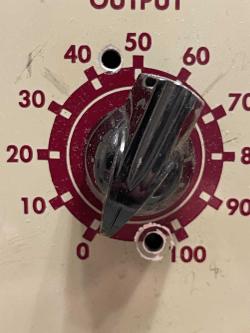
The visual inspection of the device didn’t reveal anything that I felt was concerning enough, and some quick checks of capacitors and other potential failure points seemed to indicate there wasn’t any immediate issues. Time to plug it in!
All of the tubes lit up, so on to checking the output. I let it warm up for a bit.
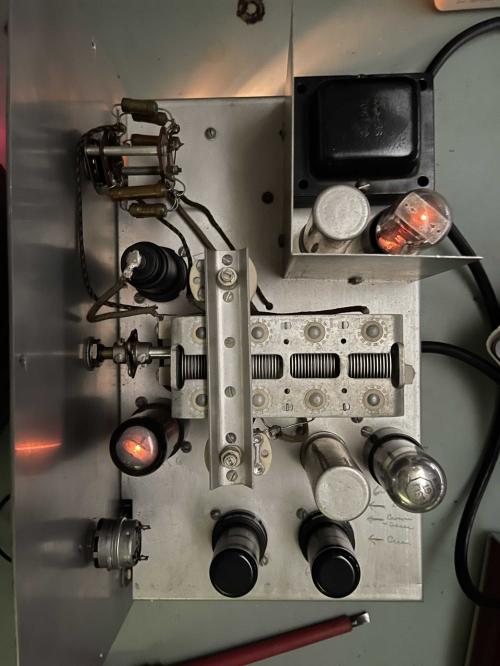
I randomly picked 300Hz as my test point, and set the dial as close as possible. The scope revealed that the device was both off in frequency vs. the dial, and had some problems with waveshape. While I didn’t do any troubleshooting at this point, I suspect that there are some leaky parts simply due to the age of the device.
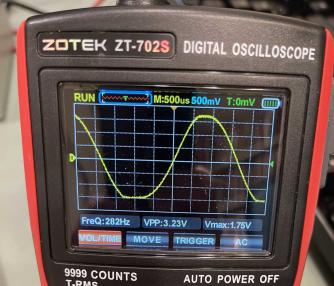
I ran up the scale with the frequency multiplier control, and it seemed to be pretty stable, generating the multiple of the selected frequency. I chose 3KHz as my next test point and adjusted the output to as close as possible to 3K.
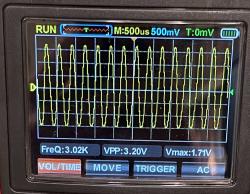
The dial was off a ways. I’m guessing the trimmer capacitors will take care of this, I just need to sit down and read the manual.
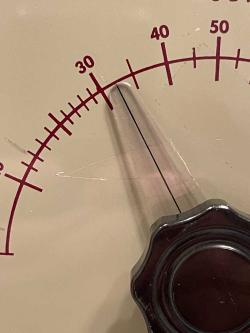
Without changing anything, I selected the squarewave output. It looks good, but drops off considerably vs. the sinewave output.
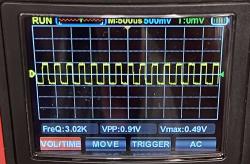
I’m not sure if this is the intended behavior, so I will again refer to the manual that I have not yet read.
Overall, this is kind of a neat piece of equipment. While it’s functionality could be exceeded with a piece of more modern equipment, sometimes it’s nice to have something that won’t be damaged (much) by accidentally having B+ on an input. If time allows, I may try and get this device up and running. It will probably require some new parts, as all of the old ones have drifted with age.
That will be a project for another day.
I’ve started working with this device: https://wereboar.com … part-1-observations/
This came from the Breezeshooters Hamfest in 2023: https://wereboar.com … uff-from-butler-but/
- 2023
- Jul
- 10
Random board shot: The Atari 2600
This is an Atari 2600 “Video Computer System,” or VCS:
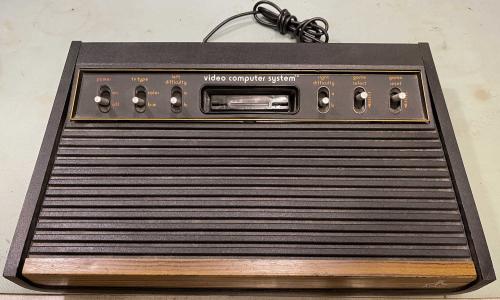
But you knew that already. This is the model known as the “Heavy Six.” It was made in Sunnyvale, California.
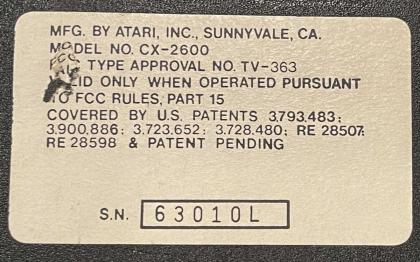
It’s a first generation model. It’s called a Heavy Six because of the six switches on the front panel, and it weighed more than later models due to the thick cabinet:
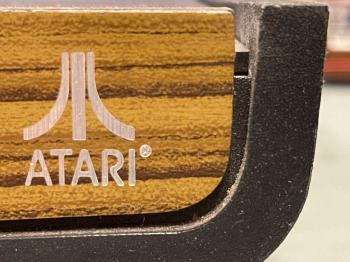
And because of the cast aluminum RF shield present around the actual processor and other circuitry. This was not present in later models:
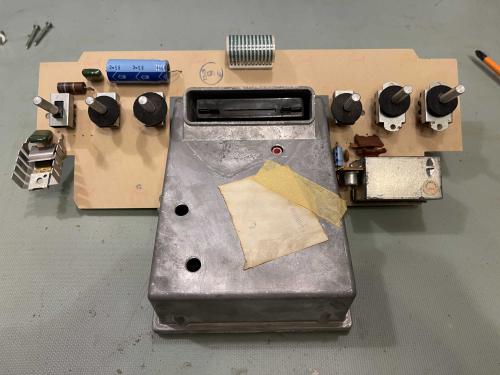
The cabinet is held together with 8 screws, and splits easily into two halves.

Code named “Stella” when it was being developed, one of the removed features was built-in speakers. You can still see the holes in the top chassis where they were supposed to be mounted.

But that’s not what interests me the most. If you examine the board, you’ll notice that now familiar Textolite “T” imprinted in the circuit board itself, indicating the raw board came from the GE plant in Coshocton, OH.
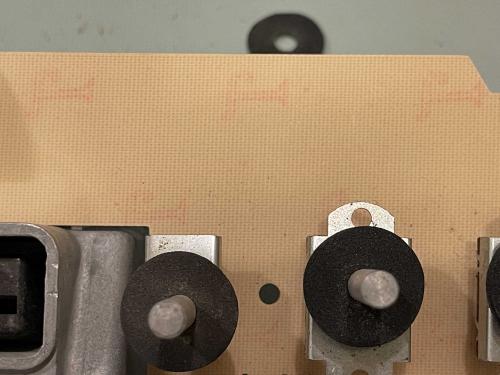
It still amazes me how far-reaching this little town’s products were.
- 2023
- Jul
- 1
Pictures from The Dayton Hamvention 2003
I was digging through some old storage recently, and came across this set of pictures from Dayton 2003.
I went with a group of friends this year, and of course it was just pouring down rain. Much of the flea market was covered and uncovered at various times, so we spent most of our time inside the arena and ballrooms, looking at the stuff. While we did view the entire flea market, I didn’t get the camera out as much as I wanted to because of the random hard rain showers.
Keep in mind that these were taken before all the fancy things like good auto white balance and low light compensation, the quality of the shots is all over the place. It was hard to stop and take pictures at times due to the crowds.
Regardless, we had a good time, and here’s my memories of the event.
- 2023
- Jun
- 27
Checking out an Eico 145 Signal Tracer
This is an Eico 145 Signal Tracer that I picked up at the Breezeshooters’ Hamfest in Butler, PA. I didn’t really need it, but the gentleman that was selling it only had a few bucks on it, so why not? This is basically a test amplifier, replacement speaker, and a replacement output transformer for troubleshooting radio and other basic consumer electronics from the vacuum tube era.
Tube compliment is:
6X5 dual diode rectifier
6SJ7 pentode as the audio preamp
6K6 pentode as the audio power amp
All the tubes for this device are octal. Later models used miniature tubes.
The unit has multiple manufacturers present in the tube lineup, so this thing probably saw a fair bit of use during it’s day. Counterclockwise from the left, it’s GE, RCA, and Sylvania, although the RCA and Sylvania tubes both exhibit the octagonal tube number symbol that indicate they were made by RCA. You can’t trust the label on these things, every manufacturer made things for every other manufacturer!
The front panel is in well-used condition, with a spray of bronze paint across the top. Was someone trying to repaint another piece of Eico gear with that sandalwood-bronze paint they liked to use?
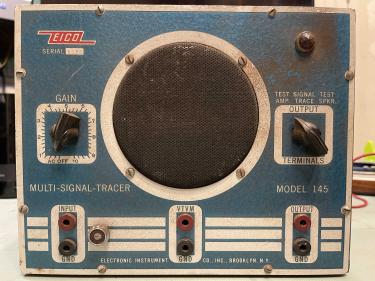
The top is rusty-ish, more so that the rest of the chassis. Perhaps it was someplace damp enough that water condensed on the top due to temperature differentials? Who knows. The handle is in excellent condition, and present - always a plus for these units.

Chassis isn’t in too bad of condition, although there are definite signs of repairs and modifications along the way, especially the jack that’s been added to the front to allow a later model signal tracer’s RF probe to be used with this device.
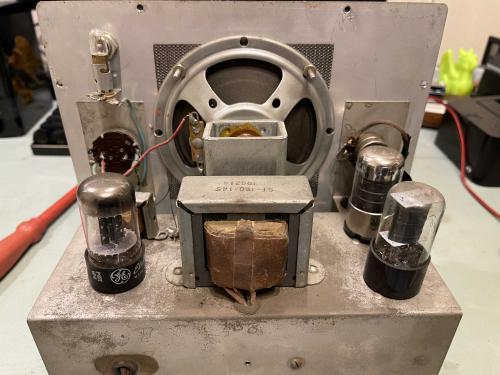
The bottom of the unit was in acceptable condition. This unit was most likely built by the end user. It’s put together in a decent manner, but is a bit of routing and soldering here and there that reveal it was built by a non-professional. That’s not an issue, it’s worked this long. (You could buy these pre-built by the factory or you could do it yourself.)
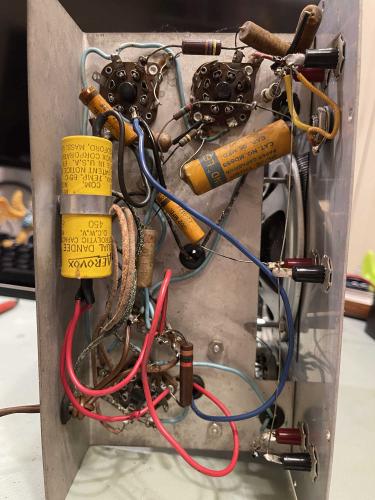
There were some parts just floating around in the chassis, including two wax capacitors for the input. These just went up through the chassis and connected to repaired wires near the function selection switch. They may be original, but have been touched at some point in their life. Note also the across-the-line capacitor (800V 0.05uF) and the added jack for the later RF probe.

There was some burnt insulation suggesting a soldering iron had been a little careless over the years. That needs to be replaced or covered at some point, but since that’s part of the electrolytic assembly it will probably just get replaced. The electrolytic itself appears to be a replacement, as the soldering job is different (and messier) than the other joints.
One I noted here was the black cloth-coated wire running up to the top of the tube socket. This has a cold joint with enough mechanical connection to make it work. How long has this been like it is? Probably since it was built. That needs to be cleaned up and fixed if this device is ever going into use.
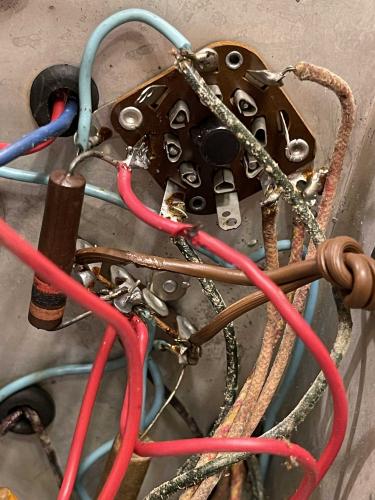
Since there’s no obvious shorts, and a quick check of the capacitors didn’t reveal anything unusual, I decided to give it the ‘ol Brute Force Reform, aka just plug it in (to a fused socket of course!) After a bit of warmup, I have light!
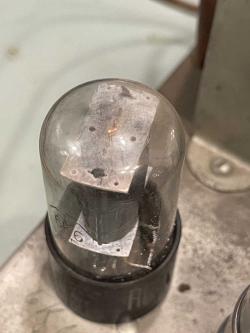
There’s no hum or excessive noise, so the device is still functional. I applied a 1KHz signal to the input, set it to Trace, and yep. It works fine. Sounds just a bit ragged, so there may be something wrong, or perhaps my cheap well used signal generator needs some work. But everything important here is operational, tubes, transformers, switches. The rest can be replaced if need be.
This gets buttoned up and is now awaiting a few minor replacements before going into use as-is. Nothing like a battle-scarred piece of equipment on your desk!
This is going to take more than minor replacements…check the next part of this series!
Next part of this series: https://wereboar.com … ignal-tracer-part-0/
- 2023
- Jun
- 23
Random board shot: AT&T PBX Surge Suppressor
This board containing a rather simplistic transient suppression circuit is the “AT&T Model 145 Transient Voltage Surge Protector” - nothing more than 3 Metal-Oxide Varistors of the same kind you’d find in a cheap power strip from the discount store. I suppose the giant box the thing is in and the red lamp on the front make up for the fact that this thing isn’t going to do diddle other than make some (contained) fire in an emergency. There’s no other filtering, and MOVs are a one-and-done device.
These were provided with AT&T network equipment, in this case a Merlin 820D2 4 line to 20 phone commercial PBX. I can’t complain, however, the device this protected was just recently turned off. Ma Bell made it to last 40 years, and it pretty much got there.
That’s not why I’m posting this, however. Of note is the orange Textolite “T”, once again indicating how far the GE Coshocton manufacturing plant reached over the years.
Another reminder of the past packed in a little box.
- 2023
- Jun
- 22
This little werepig has settled in his new home.
Originally, I thought I’d keep pygg.xyz duplicated with the same content as my new home, but really, when it comes down to it, there’s no reason for that. A simple redirect in the website’s code will automagically bring people to my new home. You’ll land on the project page since that’s where the good stuff lives.
So, take a look around. You’ll find everything pretty much looks the same. You can even replace the pygg.xyz in any URL you find with wereboar.com, and it will take you to the exact spot you were looking for. (For the most part, I’ve trimmed a bit here and there to make for a leaner piggy!)
If you landed here looking for the homepage, click this link to go there: https://wereboar.com/
Thanks for stopping by. Hope you enjoy the slice of unusual that I find in the electronics world.
- Bryan













